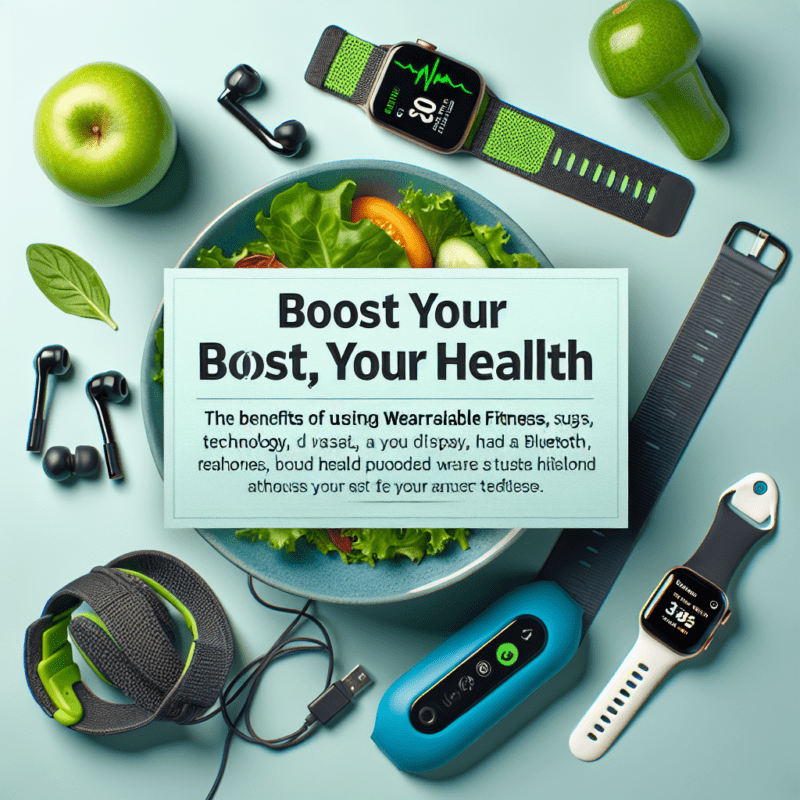In today’s fast-paced world, staying fit and healthy is a top priority for many. Wearable fitness devices have emerged as essential tools for anyone looking to optimize their workout routines and track their progress. This comprehensive guide will delve into the different types of wearable fitness devices, their benefits, features to consider when purchasing one, tips for maximizing their effectiveness, and a look towards the future of fitness technology. With the right wearable, you can take your fitness journey to new heights.
Understanding Wearable Fitness Devices
Wearable fitness devices, often referred to as fitness trackers or smartwatches, are electronic gadgets designed to monitor and record various health and fitness metrics. These devices typically come equipped with sensors that track physical activities, including steps taken, distance traveled, calories burned, heart rate, and sleep patterns. The data collected can be synced with a smartphone app or online platform, allowing users to analyze their performance over time.
The rise of wearable technology has revolutionized the way individuals approach fitness and wellness. With real-time feedback, users can understand their physical activity levels and make informed decisions about their workout routines. The detailed insights provided by these devices can motivate individuals to stay committed to their health goals, making them indispensable workout partners.
Types of Wearable Fitness Devices
Wearable fitness devices come in various forms and functionalities, catering to different fitness needs and preferences. The most common types include fitness trackers, smartwatches, heart rate monitors, and specialized devices such as GPS watches. Fitness trackers are typically wristbands that primarily focus on tracking daily activities and basic health metrics. They often feature a simple interface and excellent battery life, making them user-friendly for everyday use.
On the other hand, smartwatches offer more advanced features, integrating fitness tracking with notifications, apps, and even music control. These devices are ideal for consumers who want a multifunctional gadget that combines fitness monitoring with smartphone capabilities. Heart rate monitors, which can be worn as chest straps, armbands, or wrist devices, provide precise data crucial for those focusing on heart rate training during workouts. Meanwhile, GPS watches are tailored for outdoor enthusiasts and athletes, offering accurate tracking of distance and speed for running, cycling, and other outdoor activities.
Essential Features to Look for in a Fitness Device
When choosing a wearable fitness device, it’s vital to consider the features that will best suit your fitness journey. First, the accuracy of sensors is paramount. Look for devices that utilize advanced sensors for step counting, heart rate monitoring, and GPS tracking, as these will provide more reliable data for your workout routine. Some trackers even offer advanced metrics like VO2 max and lactate threshold, which can help you gauge your cardiovascular fitness.
Another essential feature is compatibility with mobile apps and ecosystems. Most wearable fitness devices should seamlessly sync with your smartphone or other fitness apps, allowing for real-time tracking and analysis of your data. An intuitive app interface can significantly enhance your experience, providing insights and motivators based on your daily or weekly performance trends. Also, consider battery life, especially if you plan on using your device for extended workouts or multi-day adventures.
Customization options also enhance the user experience, allowing you to personalize the device according to your aesthetic preferences and functional needs. Some devices offer interchangeable bands, customizable watch faces, and even tailored notifications to suit your unique lifestyle.
Benefits of Using Wearable Fitness Devices
The benefits of wearable fitness devices are comprehensive, particularly for those aiming to improve their health and fitness. One of the most significant advantages is motivation. These devices can gamify fitness, turning daily activities into challenges. Many devices allow users to set specific goals, participate in competitions, and earn rewards for achieving those goals, which can greatly enhance motivation and commitment.
Additionally, wearable fitness devices provide accountability. By tracking your daily activities, you can gain insights into your habits and tendencies. This feedback can help identify areas where you need to improve or adjust your fitness routine, fostering responsible behavior and encouraging consistency in your workouts. Moreover, the data collected can also be shared with trainers or peers for further accountability, creating a support system that encourages growth and improvement.
Health monitoring is another critical benefit. Many wearables come equipped with health-related features like sleep tracking, heart rate monitoring, and even stress level indicators. By understanding your body’s responses to exercise, recovery patterns, and overall well-being, you can make more informed decisions about your health and fitness routine. This holistic approach to wellness ensures that you’re not only prioritizing physical fitness but also overall health.
How to Maximize Your Wearable Fitness Device
To truly benefit from your wearable fitness device, you need to use it effectively. Start by setting clear, measurable goals based on your fitness aspirations. Whether you aim to lose weight, build endurance, or improve your overall health, having specific targets will enable you to utilize the device’s features to their fullest extent. Regularly monitoring your progress against these goals can maintain motivation and allow you to celebrate successes along the way.
Another essential aspect of maximizing your device is to explore all its features. Many users only scratch the surface of what wearable devices can offer. Take the time to understand the different metrics it tracks and how to leverage that information. For instance, if your device tracks sleep, use that data to optimize your rest and recovery time, which is as critical to fitness progress as your workouts.
Engaging with the community can also enhance your fitness journey. Many wearable devices come with accompanying social features that allow you to connect with friends or fellow fitness enthusiasts. Sharing workouts, engaging in challenges, and providing support can further motivate you and create a sense of camaraderie, turning solitary fitness activities into a more social experience.
The Future of Wearable Fitness Technology
As technology continues to advance, the future of wearable fitness devices looks promising. The next generation of these devices is expected to become even more innovative, integrating artificial intelligence and machine learning algorithms. This evolution will enable wearable devices to offer personalized insights based on individual fitness patterns, creating tailored workout plans that adapt in real-time to user performance and health metrics.
Improved sensor technology is another trend to watch. Future devices may incorporate devices with high accuracy in measuring various health markers, such as temperature, hydration levels, and blood oxygen saturation. These advancements will help users gain a comprehensive understanding of their health, allowing for more proactive and preventive care.
Additionally, wearables may further integrate seamlessly into everyday life. With advancements in connectivity and integration with smart home devices, future wearables might adjust environmental factors—such as room temperature or lighting—based on your fitness routine or needs. As the Internet of Things (IoT) expands, your fitness device could become an integral part of a larger health-focused ecosystem.
Conclusion
Wearable fitness devices are transforming the fitness landscape, making it easier for individuals to track their health, stay motivated, and achieve their fitness goals. From understanding the different types and essential features to exploring the numerous benefits and tips for maximizing their use, this comprehensive guide serves as your go-to resource for selecting and utilizing the best workout partner.
As technology advances, the future of these devices promises even greater innovation and integration, leading us towards more personalized and effective fitness experiences. Now is the time to embrace wearable fitness technology and take that next step in your health journey.
FAQs
What data do wearable fitness devices typically track?
Wearable fitness devices typically track step count, heart rate, calories burned, distance traveled, sleep patterns, and sometimes more advanced metrics like VO2 max and stress levels.
Are wearable fitness devices waterproof?
Many wearable fitness devices are water-resistant or waterproof, but it’s important to check the specifications. Some are designed for swimming while others may only tolerate splashes or brief exposure to water.
Can I use a fitness device without a smartphone?
While many fitness devices offer enhanced features when connected to a smartphone, basic activity tracking often works independently. However, for detailed analysis and syncing of data, a smartphone app is usually necessary.
How long do wearable fitness devices last on a single charge?
The battery life of wearable fitness devices varies significantly depending on the model and features used. Many devices last anywhere from several days to a couple of weeks on a single charge.
Do wearable fitness devices help in weight loss?
Wearable fitness devices can support weight loss efforts by helping users track their physical activity, monitor dietary intake, and stay accountable to their fitness goals, although success ultimately depends on individual commitment and lifestyle choices.



